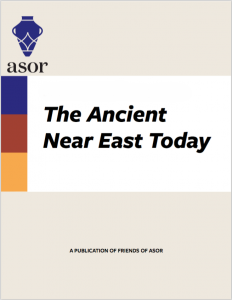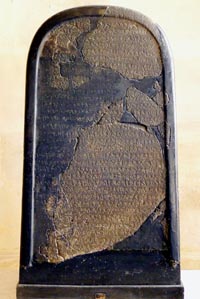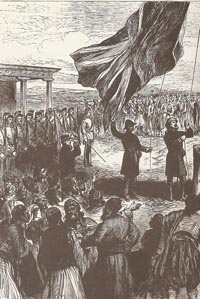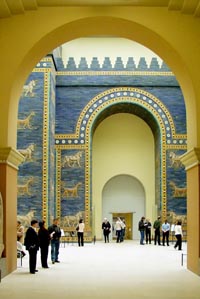

June 2014
Vol. 2, No. 6
Welcome to The Ancient Near East Today, Vol. II, No. 6! This month, travel the Near East from the Biblical period to today. We are delighted to feature a contribution from author Nina Burleigh on the Amanda Knox case and some lessons to be learned for students on digs.
Thomas Petter takes on the questions, were there Israelites in Transjordan and how can we tell? Two pieces discuss World War I: Tom Davis and Suzanne Marchand, on how the Great War shaped Cypriot and German Archaeology. Abbas Alizadeh, one of the few Americans working in Iran, looks at challenges faced by Iranian archaeologists before and after the 1979 revolution. Finally, in the FOA podcast we ask Shalom Holtz whether this is the best or worst of times for Biblical and Ancient Near Eastern Studies.
As always, we encourage you to send The Ancient Near East Today articles to family and friends, post links to Facebook and Twitter, and to be in touch with the editor. Remember, being a Friend of ASOR is free, so please spread the news!
 Amanda Knox’s Lessons for Students Traveling Abroad
Amanda Knox’s Lessons for Students Traveling Abroad
By Nina Burleigh, Journalist, Author
On the night after Halloween, 2007, in Perugia, Italy, someone murdered British exchange student Meredith Kercher in her bedroom. Four days later, the Perugia authorities announced they had solved the case, accusing Kercher’s American roommate, Amanda Knox and two young men.
READ MORE
 The Land Between the Two Rivers: Early Israelite Identities in Transjordan
The Land Between the Two Rivers: Early Israelite Identities in Transjordan
By Thomas Petter, Associate Professor at Gordon-Conwell Theological Seminary
Were there Israelites in Transjordan in the early Iron Age? How would we know from archaeology? Or if not Israelites (and Moabites), whom should we be looking for? The task of plotting identities in the past is tricky business.
READ MORE
 The Challenges of Rebuilding an Archaeological Program in Post-Revolutionary Iran
The Challenges of Rebuilding an Archaeological Program in Post-Revolutionary Iran
By Abbas Alizadeh, Senior Research Associate, Oriental Institute of the University of Chicago
Iran is one of the most important regions in the archaeology of ancient Near East. The country consists of lowlands (Khuzestan, ancient Susiana), highland plateau, high and vast chains of the Zagros and Alborz Mountains (in the west and north), large and small intermountain valleys, and vast deserts.
READ MORE
 Cypriot Archaeology and the Great War
Cypriot Archaeology and the Great War
By Thomas Davis, Professor of Archaeology, Southwestern Baptist Theological Seminary
The weakness of the Ottoman Empire in the nineteenth century attracted the covetous eyes of the Great Powers. Cyprus, as an ‘offshore’ possession, was particularly attractive in a time of enhanced naval rivalry. Britain acquired de facto rule over the island in 1878 from the Ottomans primarily to prevent Russia or France from absorbing it.
READ MORE
 The Great War and German Archaeology
The Great War and German Archaeology
By Suzanne Marchand, Professor at Louisiana State University
The Great War marks an enormous watershed in the history of German archaeology, a kind of golden age. The two decades before its outbreak saw the opening or expansion of state sponsored investigations. In Mesopotamia, Assur, Babylon, Samarra, and Warka.
READ MORE





